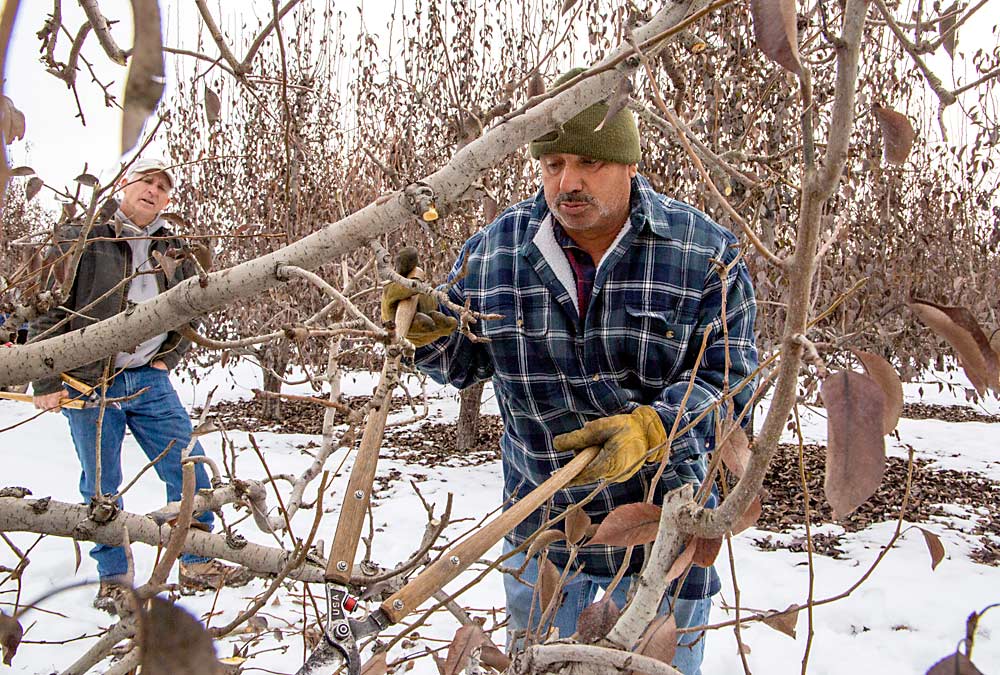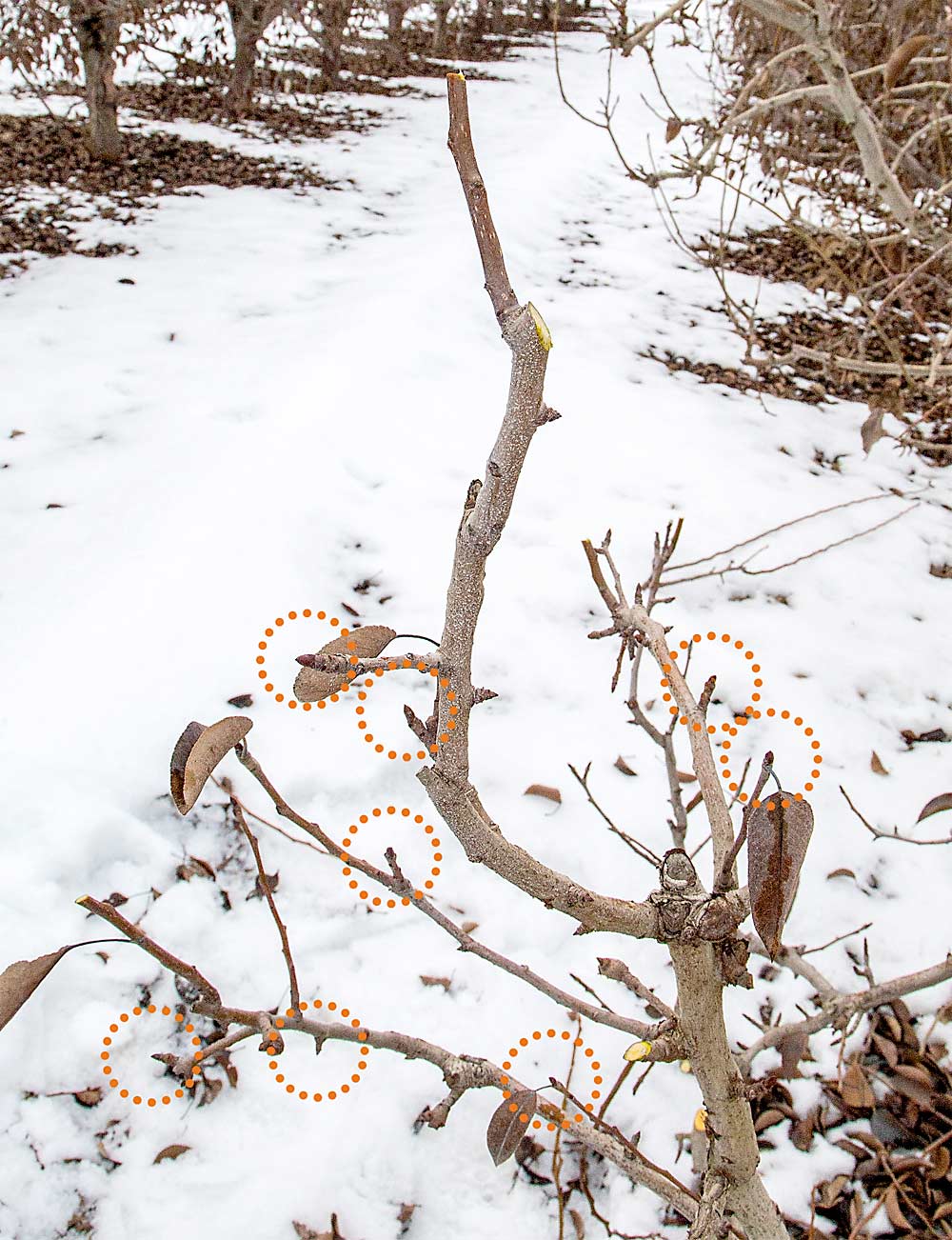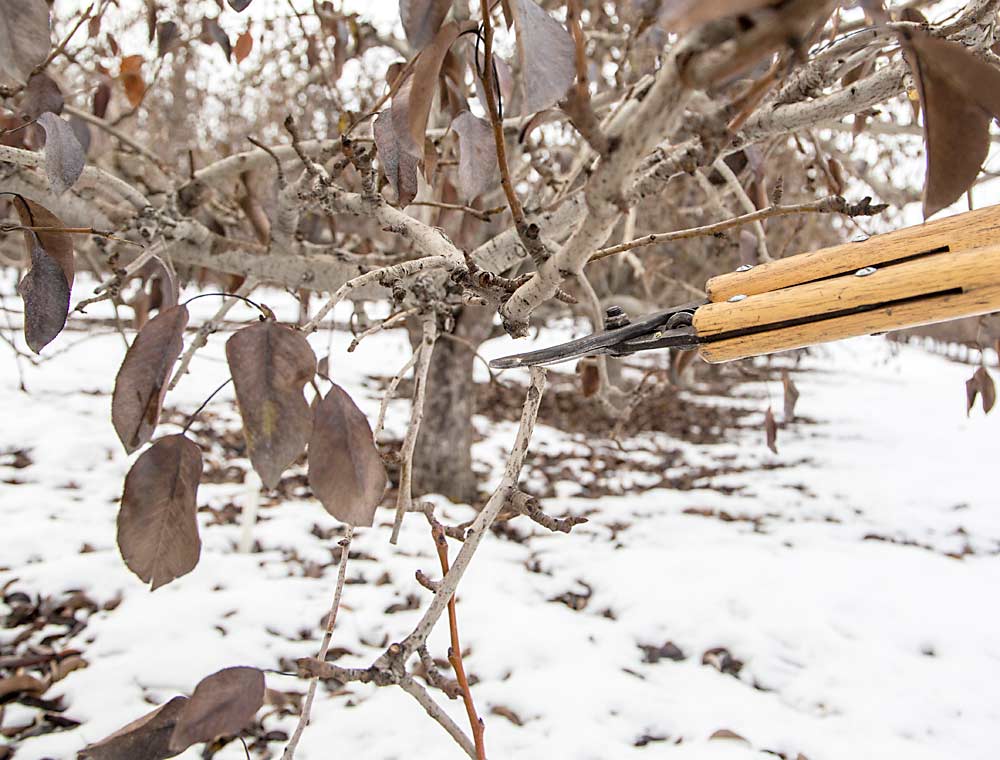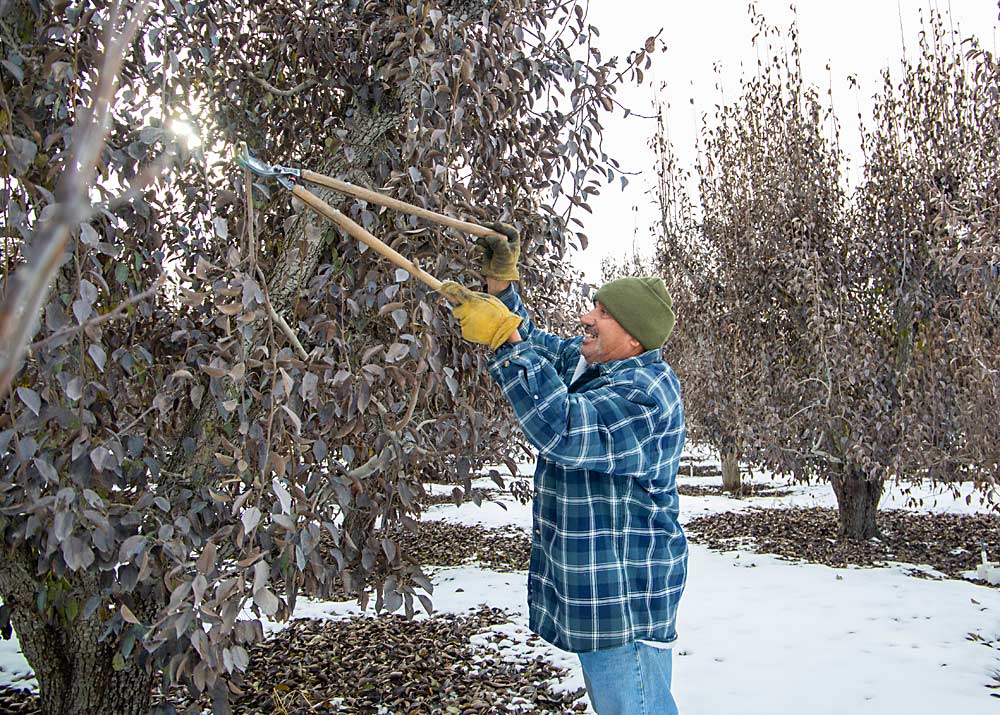
Some of your Bartletts will make the grade for fresh packing. Others are headed for the processor.
If you can, decide which are which now, during winter, while you’re still pruning.
Every year, the Washington and Oregon pear industry strives for the right balance of fresh market pears and those headed to the region’s two canneries. Some growers have cannery contracts for all their Bartlett acreage. Others play the field to find the best prices for their crop each year.
With cannery prices set for 2023 at a relatively healthy $395 per ton, this is a good year to target blocks early for their respective markets, said Steve Carlson, field manager for Del Monte, the Northwest’s largest canner. Those prices are likely to stick around, he said.
“The Bartlett market will continue at a favorable incline for a while,” he said, due to a healthy supply and demand balance.
It’s possible — in fact, common — to make the decision at the point of harvest with ring picking: using a sizing ring to determine which pears go fresh and which go process. Some growers have “sieves” that let smaller, cannery-bound pears fall through.
But deciding early lets you tailor pruning for each consumer destination. A few growers in Washington’s Yakima Valley shared their tricks with Good Fruit Grower.
First: “Let’s choose the right trees,” said Shawn Phelps, a Yakima Valley grower.
He targets his younger, more vigorous trees for fresh and his older trees for the cannery. The biggest difference in pruning is size goals, he said.

The fresh market demands large pears, which means pruning to expose fruiting buds to sunlight and to isolate them so they don’t suffer limb rub, Phelps said.
“We try to get these packed,” Phelps said, pointing to several rows of Bartletts planted around 2001.
“We’re going to prune these hard,” he said. He aims to keep all the smaller limbs, for a “better chance of size and not getting scuff marks. So, you’re trying to separate them out.”
For fruiting wood, he and his longtime orchard manager, Trino Arias, seek out 1-year-old branches growing upward, which they then shorten to encourage new vigor and to thicken them up for support. They also prune away larger nearby branches that could shade out the developing fruit later in the season.

Cannery pears come from his older trees, which don’t move nutrients as quickly and don’t size up fruit as efficiently.
Canneries want tonnage, which means pruning to encourage high yields. He leaves more fruiting branches, figuring size and limb rub is not as important.
“These trees … they’re just older,” he said while pointing to a block close to 90 years old. “You’re going to leave a lot more brush on them, so you get more fruit.”
Phelps also applies more fertilizer to cannery trees to encourage more fruit, he said. Fertilizing younger trees too hard could risk fire blight.
For both fresh and processed pears, Phelps and Arias tip 1-year-old branches to invigorate the whole limb for bigger fruit.
“Anything that you want to grow, we tip,” he said.
Other growers had similar ideas about pruning for size vs. yield.
Andrew Sundquist of Sundquist Fruit and Cold Storage in Yakima selects younger, higher-density blocks for fresh pack and the older trees for cannery. He also prunes trees for fruit size based on market segment.
Most of his Bartlett blocks go to processing, though. They sit in areas with fewer heat units and don’t size as well, he said. However, the increase in demand for bagged fruit may open opportunities for smaller fruit on the fresh market.

Cannery prices have given Wapato grower Phil Doornink a sense of stability, making pruning decisions easier, he said.
“I love to know exactly what I’m going to get every year,” Doornink said.
Like his neighbor, Phelps, he prunes for size and sunlight and is wary of limb rub. He has blocks on top of a ridge exposed to high winds. He sets aside those trees for the cannery, even though they produce big pears. The fruit is usually too damaged for fresh pack, he said.
Leaves are complicating pruning this year, he said. The extended warm weather in the fall, followed by the sudden arrival of cold, left leaves clinging to branches into January. Making the best of it, however, Doornink said the leaves help him and his pruners find light channels for fruit, something that’s harder to guess when pruning leafless branches.
Doornink also cautioned against making decisions too rigidly.
Each winter, he flags trees for cannery or fresh, based on the size of the fruit they historically produce. He aims for a 50–50 split.
But he keeps his eye on the market throughout the year and adjusts accordingly. With cannery prices high, sometimes it makes more economic sense to just pick the whole block for processing, regardless of fruit size.
“We’re constantly in communication with our warehouse, with our sales desk,” he said.
—by Ross Courtney






Leave A Comment